Cause of death Prostate cancer Years active 1939–86 Name Peter Cushing | Role Actor Occupation Actor Height 1.82 m | |
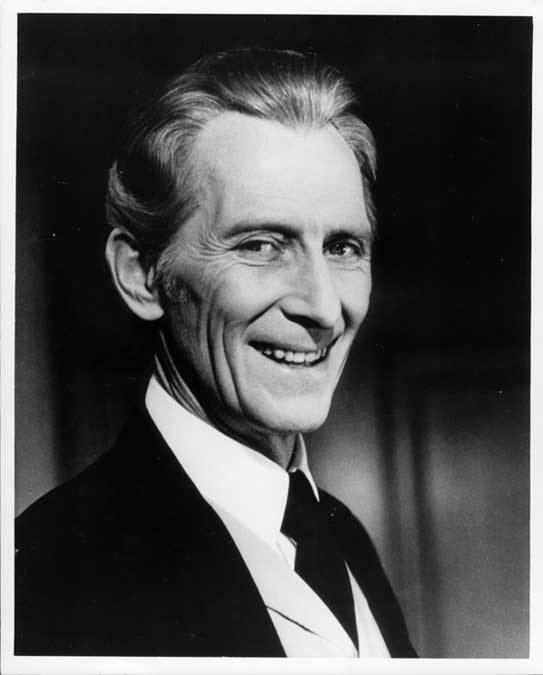 | ||
Full Name Peter Wilton Cushing Spouse Helen Cushing (m. 1943–1971) Books An autobiography, Peter Cushing the Complete Memoirs, Past Forgetting: Memoirs of the Hammer Years Movies Dracula, The Curse of Frankenstein, Star Wars, Frankenstein Created Woman, Frankenstein Must Be Destroyed Similar People | ||
Legendary Actor Peter Cushing Talks About His Acting Technique
Peter Wilton Cushing, OBE (26 May 1913 – 11 August 1994) was an English actor and a BAFTA TV Award Best Actor winner in 1956. He is mainly known for his prolific appearances in Hammer Films, in which he played strong character roles like the sinister scientist Baron Frankenstein, Sherlock Holmes and the vampire hunter Dr. Van Helsing, among many other roles. He appeared frequently opposite Christopher Lee and, occasionally, Vincent Price.
Contents
- Legendary Actor Peter Cushing Talks About His Acting Technique
- Peter Cushing on playing Grand Moff Tarkin on carpet slippers in STAR WARS EPISODE IV A NEW HOPE
- Early life and career
- Hammer Horror and other work
- Personal life
- Star Wars
- Morecambe and Wise
- Later life and death
- Filmography
- References
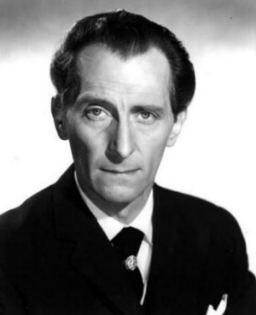
A familiar face on both sides of the Atlantic, Cushing is best known outside the Hammer productions for his performance as Grand Moff Tarkin in Star Wars (1977). He also played Dr. Who in Doctor Who and the Daleks (1965) and Daleks – Invasion Earth (1966).
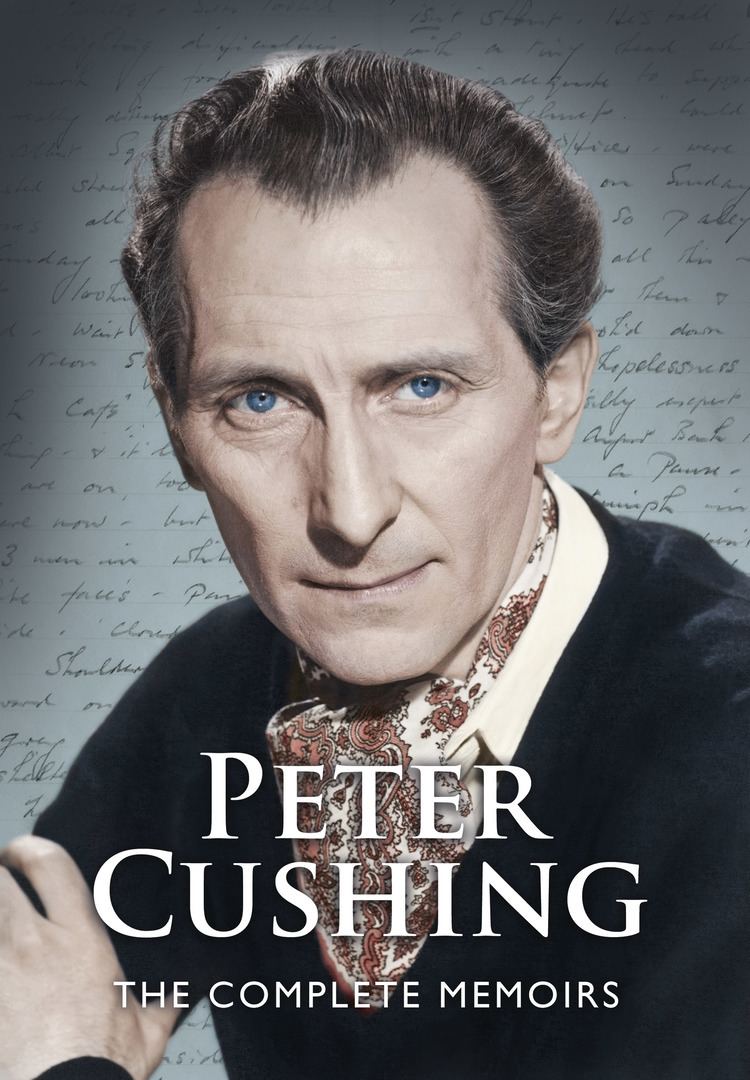
Peter Cushing on playing Grand Moff Tarkin on carpet slippers in STAR WARS - EPISODE IV: A NEW HOPE
Early life and career
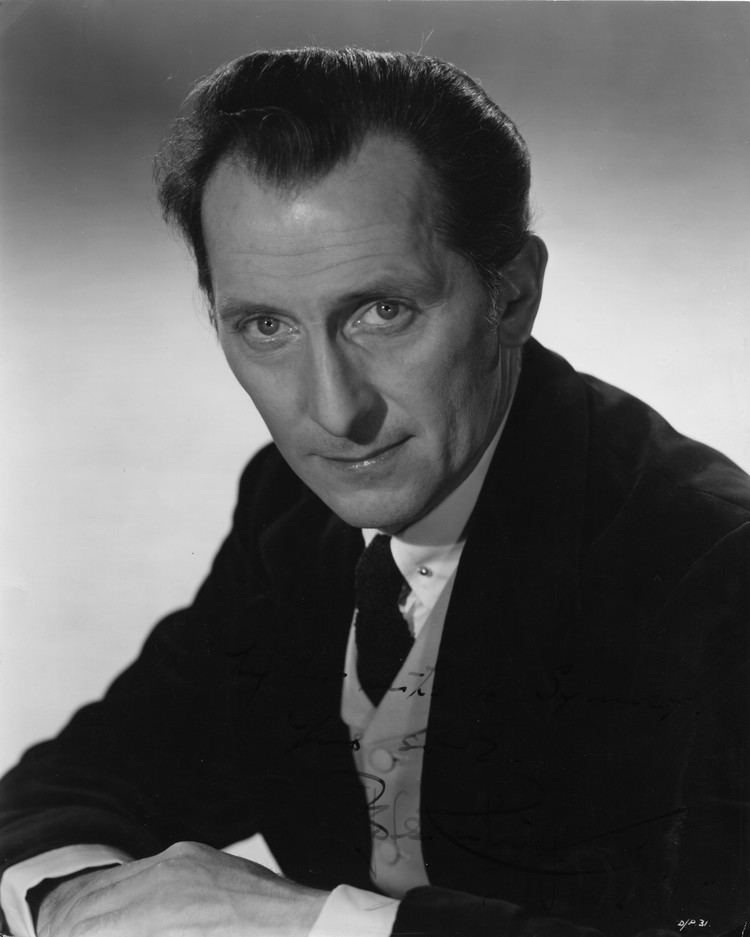
Cushing was born in Kenley, Surrey, the second son of George Edward Cushing (1881–1956) and Nellie Maria (née King) Cushing (1882–1961). Shortly after his birth, the family moved to Dulwich, South London. After the end of the First World War, they returned close to Kenley; this time to neighbouring Purley, Surrey, where in 1926 his quantity surveyor father built Clearview, an Art Deco house on St James Road. It was here that Cushing remained until early adulthood.
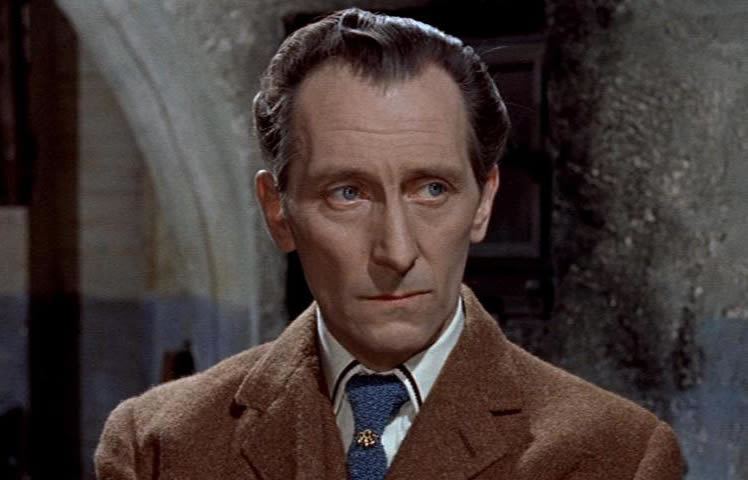
Educated at Shoreham College, Cushing left his first job as a surveyor's assistant to take up a scholarship at the Guildhall School of Music and Drama. After working in repertory theatre in Worthing, Sussex, he left for Hollywood in 1939, making his debut in The Man in the Iron Mask later that year, before returning to England in 1941 after appearing in several films. In one, A Chump at Oxford (1940), he appeared opposite Laurel and Hardy. During the Second World War he served with the Entertainments National Service Association (ENSA). His first major film role was that of Osric in Laurence Olivier's version of Hamlet (1948).
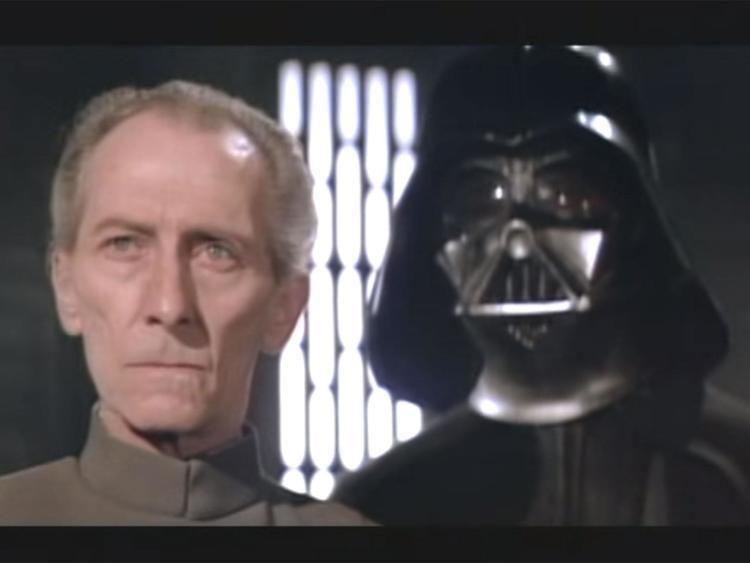
In the 1950s, Cushing worked in television, notably as Winston Smith in the BBC's 1954 adaptation of the George Orwell novel Nineteen Eighty-Four (1949), scripted by Nigel Kneale. Cushing was highly praised for his performance, although he considered his acting in the surviving second version of the broadcast—it was performed live twice in one week, then a common practice, and only the second version exists in the archives—to be inferior to the first.
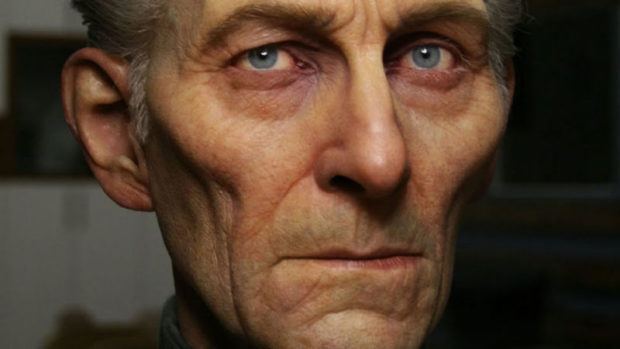
Among other TV appearances, Cushing starred as Fitzwilliam Darcy in the BBC's production of Pride and Prejudice (1952), as King Richard II in Richard of Bordeaux (1955), and as Raan, a Prospero-like character, in "Missing Link" (1975), an episode of Space: 1999. He also appeared in The Avengers and its successor series, The New Avengers. In 1956, he received the British Academy Television Award for Best Actor.
Hammer Horror and other work
Cushing is well known for playing Baron Victor Frankenstein and Professor Van Helsing in a long series of horror films produced by Hammer Film Productions in the 1950s, 1960s, and 1970s. He was often cast alongside Christopher Lee, who became his best friend. His first appearances in his two most famous roles were in Terence Fisher's films The Curse of Frankenstein (1957) and Dracula (1958). He later said that his career decisions entailed selecting roles where he knew that he would be accepted by the audience. "Who wants to see me as Hamlet? Very few. But millions want to see me as Frankenstein, so that's the one I do." The film critic Roger Ebert described Cushing's work in the Hammer films thusly: "[Cushing is] the one in all those British horror films, standing between Vincent Price and Christopher Lee. His dialog usually runs along the lines of, 'But good heavens, man! The person you saw has been dead for more than two centuries!'"
Cushing also played Sherlock Holmes many times, originally in Hammer's The Hound of the Baskervilles (1959), the first Holmes adaptation to be filmed in colour. This was followed by a performance in 16 episodes of the BBC series Sir Arthur Conan Doyle's Sherlock Holmes (1968), of which only six episodes survive. Cushing reprised the role, now playing the detective in old age, in The Masks of Death (1984) for Channel 4.
In an interview published in ABC Film Review in November 1964, Cushing stated, "People look at me as if I were some sort of monster, but I can't think why. In my macabre pictures, I have either been a monster-maker or a monster-destroyer, but never a monster. Actually, I'm a gentle fellow. Never harmed a fly. I love animals, and when I'm in the country I'm a keen bird-watcher." In an interview published in 1966, he added, "I do get terribly tired with the neighbourhood kids telling me 'My mum says she wouldn't want to meet you in a dark alley'."
In the mid-1960s, Cushing played Doctor Who in two films (Dr. Who and the Daleks and Daleks – Invasion Earth: 2150 A.D.) based on the BBC science-fiction TV series Doctor Who, although the films are not considered part of the show's official canon by the BBC. He decided to play the part as a lovable and avuncular figure.
Personal life
In 1971, Cushing withdrew from the filming of Blood from the Mummy's Tomb following the death from emphysema of his wife, actress Violet Helene Beck (8 February 1905 – 14 January 1971), to whom he had been married since 1943. The following year, he was quoted in the Radio Times as having said, "Since Helen passed on I can't find anything; the heart, quite simply, has gone out of everything. Time is interminable, the loneliness is almost unbearable and the only thing that keeps me going is the knowledge that my dear Helen and I will be reunited again some day. To join Helen is my only ambition. You have my permission to publish that ... really, you know, dear boy, it's all just killing time. Please say that."
In his autobiography, Cushing implies that he attempted suicide on the night of his wife's death by running up and down stairs in the vain hope that it would induce a heart attack. He later stated that this had simply been a hysterical response borne out of grief, and that he had not purposely attempted to end his life; a poem left by Helen had implored him not to die until he had lived his life to the full, and he had resolved that to commit suicide would have meant letting her down. Although not conventionally religious, Cushing maintained a belief both in God and an afterlife. Cushing's colleagues of that period commented on his deeply Christian faith and his conviction that his separation from his wife was only temporary.
The effects of his wife's death proved to be as much physical as mental. For his role in Dracula A.D. 1972, Cushing had originally been cast as the father of Stephanie Beacham's character, but had aged so visibly and lost so much weight that the script was hastily re-written to make him her grandfather: it was done again in the last Dracula film from Hammer, The Satanic Rites of Dracula. In a silent tribute to Helen, a shot of Van Helsing's desk includes a photograph of her. He repeated the role of the man who lost family in other horror films, including Asylum (1972), The Creeping Flesh (1973), and The Ghoul (1975). In 1986, Cushing appeared on the BBC TV show Jim'll Fix It, his wish being to have a strain of rose named after Helen; the "Helen Cushing Rose" was the result.
Star Wars
In 1976, Cushing was cast in Star Wars in the supporting part of Grand Moff Tarkin. Like all of the other actors portraying Galactic Imperial officers, he was presented with ill-fitting riding boots, which pinched his feet so much that he was given permission by director George Lucas to play the role wearing his slippers. As a result, the camera operators filmed him throughout the film only from the knees up, or else standing behind the table of the Death Star conference room set. This costuming discomfort aside, Cushing contrasted sharply with co-star Alec Guinness in that he enjoyed his experience on the film, appreciated the renewed interest in his work from young fans and only regretted that he could not appear in the sequels.
For the 2016 film Rogue One, CGI and digitally-repurposed-archive footage were used to insert Peter Cushing's likeness from the original movie over the body of actor Guy Henry. Henry provided the on-set capture and voice work with the reference material augmented and mapped over his performance like a digital body-mask. Cushing's estate owners were heavily involved with the creation which took place over twenty years after his death. This extensive use of CGI to "resurrect" an actor who had died decades ago created a great deal of controversy about the ethics of using a deceased actor's likeness. Joyce Broughton, Cushing’s former secretary, had approved recreating Cushing in the film. After attending the London premiere, she was reportedly "taken aback" and "dazzled" with the effect of seeing Cushing on screen again.
Morecambe and Wise
Following Star Wars, Cushing continued to appear sporadically in film and television, as his health permitted. In 1969, he had appeared in a comedy play by Ernie Wise on The Morecambe and Wise Show on BBC2. Throughout the BBC era of the show, he would regularly join Wise and his comic partner, Eric Morecambe, on stage; he would constantly seek payment for his first appearance, wearily asking "Have you got my five pounds yet?"
This running joke continued when the duo left the BBC and moved to Thames Television in 1978. Cushing appeared in their first special for Thames Television on 18 October, still asking to be paid, with the hosts repeatedly trying to get rid of him; at the end of the show, Morecambe placed some money in a wallet wired up to a bomb, in an attempt to blow Cushing up in exaggerated comedic style. In the duo's 1980 Christmas special, Cushing pretended to be the Prime Minister while Morecambe and Wise caroled outside 10 Downing Street; he made the comedians give him money and finally came out to declare "Paid, at last!"
Wise was a guest for Cushing's appearance on This Is Your Life in 1990. He promptly presented Cushing with a twenty-pound note, only to extort it back from him, for the price of a taxi getting there and the rental of a suit for that particular night.
Later life and death
Cushing was diagnosed with prostate cancer in 1982, but managed to survive for 12 years without surgery, although his health remained fragile. In 1989, he was made an Officer of the Order of the British Empire; his friend Christopher Lee publicly opined that the honour was "too little, too late". Cushing retired to Whitstable, on the Kent coast, where he had bought a seafront home in 1959, and continued his hobby of birdwatching while writing two autobiographies. He also worked as a painter, specialising in watercolours, and wrote and illustrated a children's book of Lewis Carroll–style humour, The Bois Saga. He was a patron of the Vegetarian Society from 1987 until his death.
Cushing's final professional commitment was the co-narration of the TV documentary Flesh and Blood: The Hammer Heritage of Horror, produced by American writer and director Ted Newsom. His contribution was recorded in Canterbury, near his home. The programme was broadcast only a few days before he died on 11 August 1994, aged 81.
In an interview included on the DVD release of The Hound of the Baskervilles (1959), Lee said of his friend's death: "I don't want to sound gloomy, but at some point of your lives, every one of you will notice that you have in your life one person, one friend whom you love and care for very much. That person is so close to you that you are able to share some things only with him. For example, you can call that friend, and from the very first maniacal laugh or some other joke you will know who is at the other end of that line. We used to do that with him so often. And then when that person is gone, there will be nothing like that in your life ever again."
